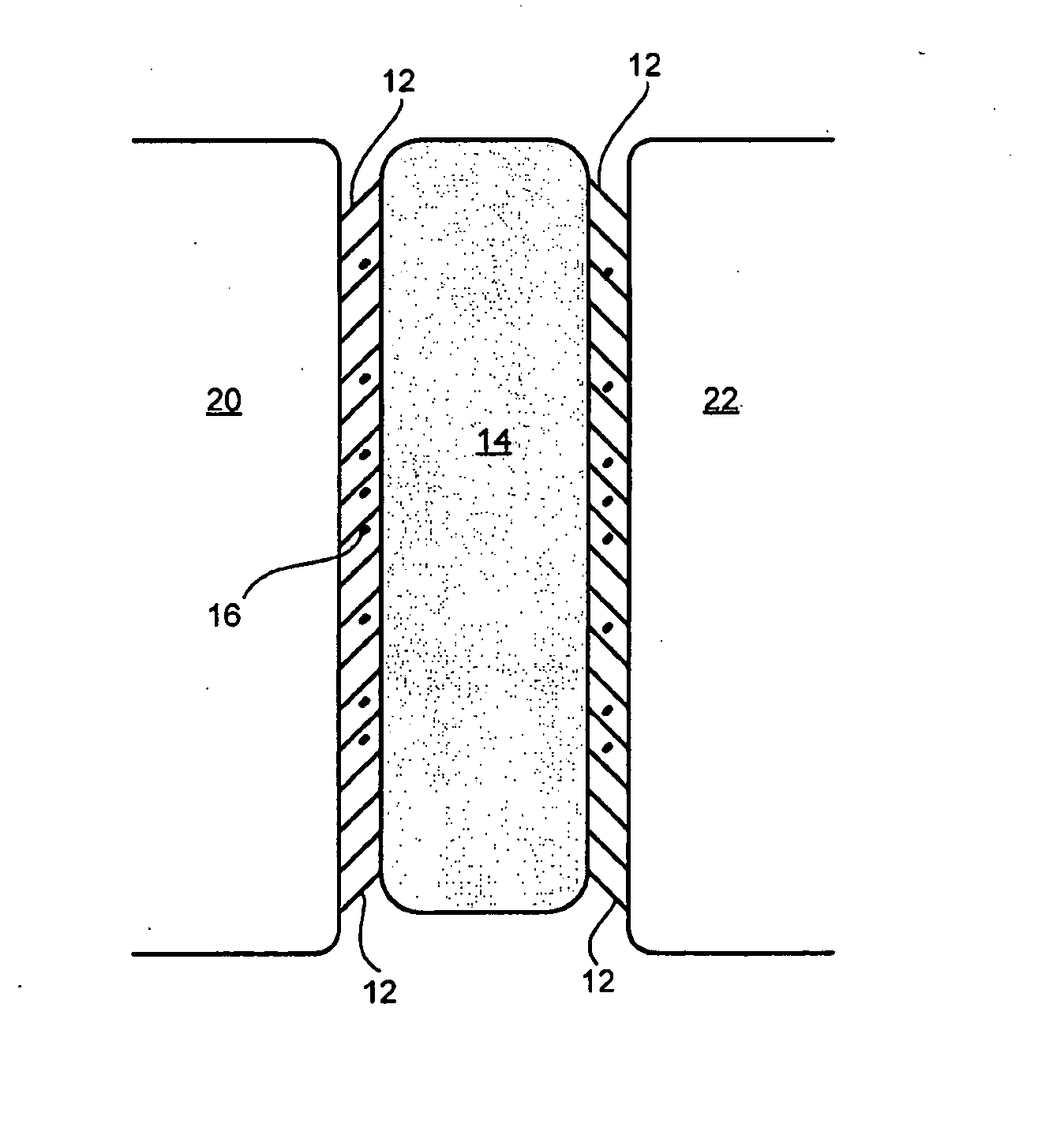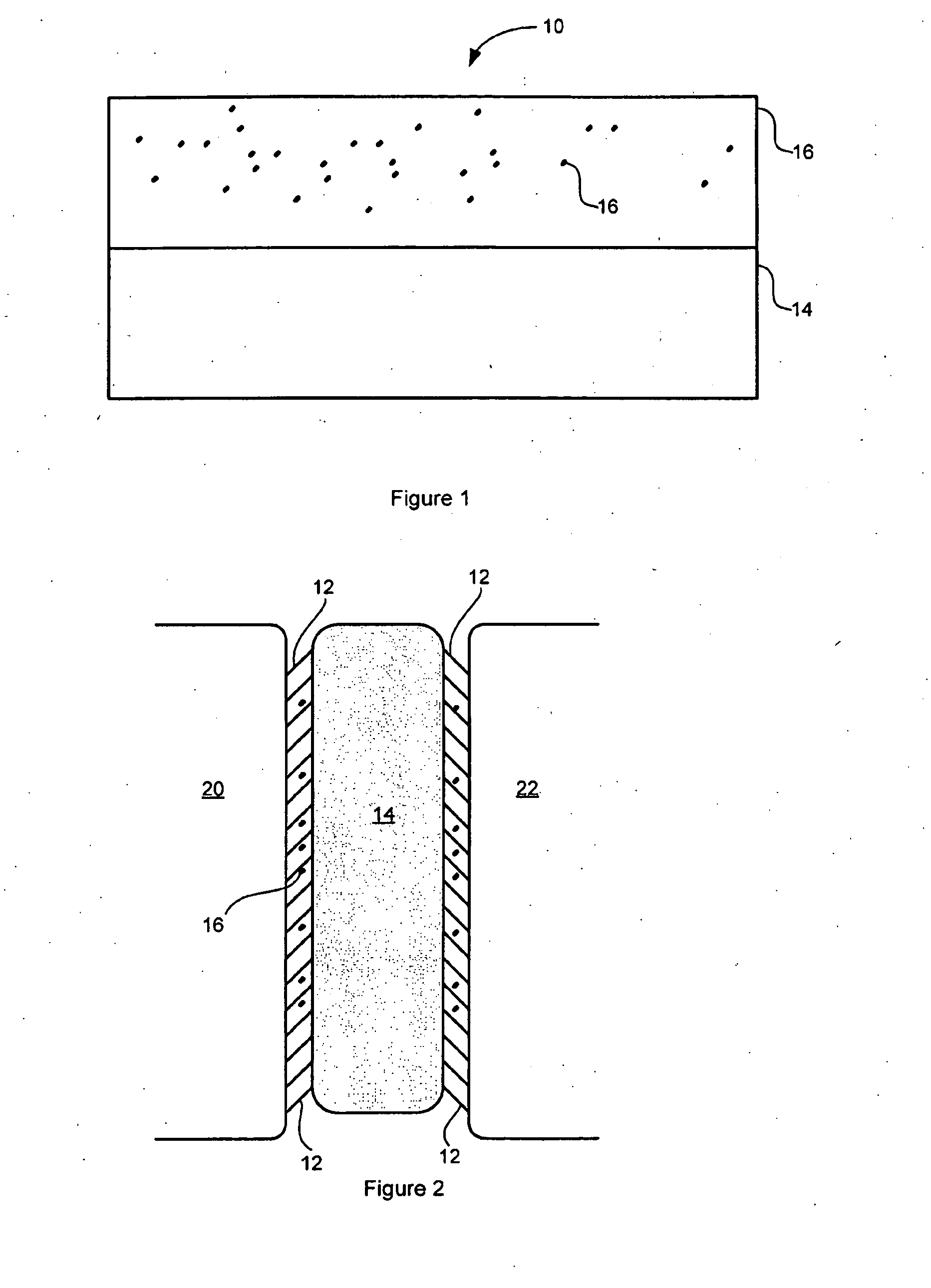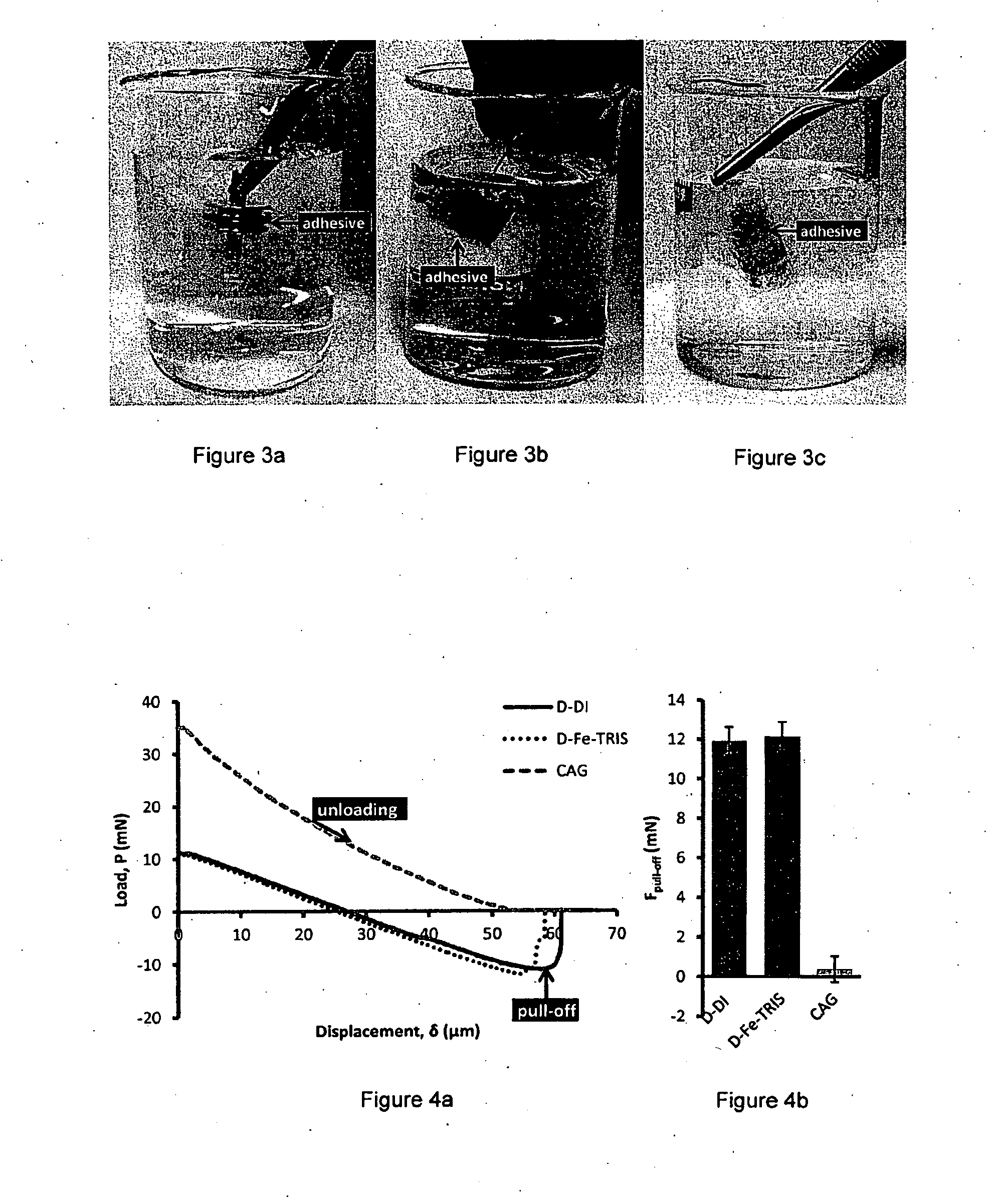Method and apparatus for adhesive bonding in an aqueous medium
a technology of adhesive bonding and aqueous medium, applied in the field of adhesive materials, can solve the problems of reducing the strength of interactions and high strength irreversible covalent bond formation to an organic surface, and achieve the effect of reducing the strength of interactions and high strength
- Summary
- Abstract
- Description
- Claims
- Application Information
AI Technical Summary
Benefits of technology
Problems solved by technology
Method used
Image
Examples
example 1
[0051]In a first experiment or manufacture, hydrophilic adhesive molecules, such as concentrated dopamine hydrochloride solution and a mixture of adhesive molecules such as dopamine hydrochloride with oxidizing agents comprising ferric nitrate, tris(hydroxymethyl)aminomethane (Tris), and water were injected at the interface between soft polydimethylsiloxane (soft as human tissue) acting as a first surface and hard glass substrates acting as a second surface underwater. Improvements on interfacial adhesion were observed despite the large mismatch in elasticity of the substrates. This kind of interfacial improvement may be beneficial to applications such as immobilizing implants in bodies.
[0052]More specifically, the adhesive strength of polydopamine was studied by in-situ polymerization of dopamine between two surfaces underwater. 0.1 mL of concentrated dopamine solution at 1:8 dopamine to water mole ratio was injected and sandwiched between a hemispherical soft PDMS tip and a flat r...
example 2
[0054]In another experiment or manufacture, the adhesive material provides a method of bonding and joining two similar or dissimilar materials underwater. In this example, the adhesive material comprises two distinct components comprising adhesive molecules, hydrophilic polymers and at least one oxidizing agent. The first component being a mixture of four chemicals: dopamine hydrochloride (hydrophilic adhesive molecules), ferric nitrate (oxidizing agent), tris(hydroxymethyl)aminomethane (TRIS) (oxidizing agent), and water (oxidizing agent). The second component is a solution of sodium alginate (hydrophilic polymer) that forms a hydrogel network with the first component when mixed. During experimentation, the bonding or joining was performed by sequential injections of the first component and the second component at the joint (between two surfaces to be adhered) in water. The surfaces were lightly squeezed together after each injection to evenly distribute the adhesive material at an...
example 3
[0059]In another experiment or manufacture, it was shown that the adhesive material may maintain improved performance and decent adaptabilities to meeting requirements of various applications. In this experiment, the adhesive material was able to perform at different pH and temperature, ranging from 4 to 10 and 20 to 40° C., respectively and on different substrates, such as polyethylene terephthalate. The formulation of the adhesive material, in this embodiment, is seen as flexible such that its adhesive components (the hydrophilic adhesive molecules, the hydrophilic polymers and the oxidizing agents) may be substituted with different hydrophilic polymers such as poly(sodium 4-styrenesulfonate) and different oxidizing agents such as ammonium persulfate and calcium ions. Results from by tensile tests indicated that the bond strength at a curing time of 2 hours and with a contact area of 100 mm2 is in general over 0.5 kg or 50 kPa for these diverse application circumstances.
[0060]In t...
PUM
| Property | Measurement | Unit |
|---|---|---|
| Fraction | aaaaa | aaaaa |
| Mass | aaaaa | aaaaa |
| Atomic weight | aaaaa | aaaaa |
Abstract
Description
Claims
Application Information
 Login to View More
Login to View More - R&D
- Intellectual Property
- Life Sciences
- Materials
- Tech Scout
- Unparalleled Data Quality
- Higher Quality Content
- 60% Fewer Hallucinations
Browse by: Latest US Patents, China's latest patents, Technical Efficacy Thesaurus, Application Domain, Technology Topic, Popular Technical Reports.
© 2025 PatSnap. All rights reserved.Legal|Privacy policy|Modern Slavery Act Transparency Statement|Sitemap|About US| Contact US: help@patsnap.com



